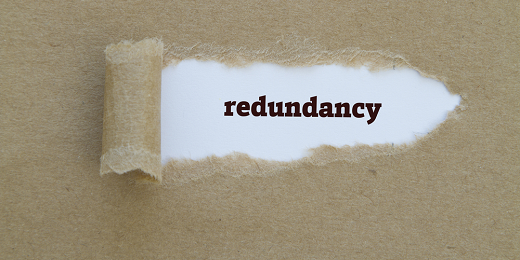What Happens to Redundancy If Company Goes Bust? A Guide to Your Rights
What Happens to Redundancy If Company Goes Bust? A Guide to Your Rights
Blog Article
Exploring the Operational Characteristics of Business Redundancy and Its Long-Term Sustainability

Redundancy Methods for Business Connection
In order to make sure continuous procedures, organizations should apply effective redundancy methods for business continuity. Redundancy in this context refers to the duplication of essential components or functions within a system to minimize the effect of possible failings. By including redundancy strategies, companies can enhance their strength versus disturbances caused by numerous variables such as all-natural calamities, devices failures, or cyber-attacks.
One usual redundancy technique is the application of back-up systems and information storage space solutions. This involves creating duplicates of important data and systems that can be triggered in instance of a primary system failure. Additionally, companies can develop repetitive interaction channels and power sources to keep connectivity and procedures during unforeseen events.
In addition, cross-training employees to perform multiple roles within the company can offer as a valuable redundancy strategy. If vital personnel are not available due to disease or various other factors, this ensures that crucial jobs can still be lugged out even. In general, effective redundancy strategies are essential for companies to maintain operational continuity and minimize the effect of possible disruptions.
Influence of Redundancy on Organizational Durability
Given the important role redundancy approaches play in making sure organization continuity, checking out the impact of redundancy on organizational strength comes to be critical for understanding the alternative functional characteristics of a firm. Redundancy, when strategically executed, can substantially add to improving a company's resilience in the face of unforeseen challenges.
Additionally, redundancy can reinforce worker morale and confidence, recognizing that there are contingency strategies in area to attend to unpredicted scenarios. This feeling of security can result in raised efficiency and a more favorable workplace. In addition, redundancy can great post to read promote advancement and imagination within a company as workers feel equipped to take computed dangers, recognizing that there is a safeguard to sustain them in case of failure. Overall, the impact of redundancy on organizational durability is profound, forming the long-lasting sustainability and success of a firm.
Balancing Efficiency and Adaptability in Redundancy
Attaining a harmonious balance between functional performance and adaptive flexibility is a critical obstacle in the critical implementation of redundancy within companies. Also much flexibility without a solid functional foundation can result in ineffectiveness and inconsistency.
To stabilize efficiency and versatility in redundancy planning, organizations need to meticulously examine their functional demands, market characteristics, and strategic objectives. Executing lean techniques can enhance effectiveness by simplifying processes and eliminating waste, while cultivating a culture of flexibility and constant enhancement can boost flexibility. Furthermore, spending in cross-training programs and durable communication networks can help grow a functional labor force with the ability of managing diverse tasks during periods of shift. Inevitably, finding the ideal equilibrium between efficiency and adaptability is essential for developing a resistant and lasting organization when faced with uncertainty.
Long-Term Sustainability Via Redundancy Preparation
To ensure enduring practicality and security, companies have to strategically align their redundancy planning with long-lasting sustainability objectives, consequently integrating operational efficiency with flexible adaptability. Companies must watch redundancy not as a reactive option to immediate problems but as a positive technique for lasting success.

Positive Measures for Sustainable Firm Procedures
Exactly how can firms proactively enhance their operational sustainability for long-term success? Implementing positive actions is important for business intending to guarantee lasting operations.
In addition, promoting a society of continuous enhancement and learning within the organization can boost adaptability to transforming market problems and customer demands. Urging employee involvement in decision-making processes and supplying chances for professional growth can improve morale, performance, and total performance. Establishing clear objectives, monitoring vital efficiency indications, and frequently examining development are essential elements of proactive sustainability monitoring.
Working together with suppliers, consumers, and various other stakeholders to promote lasting methods throughout the supply chain can produce a read here causal sequence of favorable effect - redundancy pay if company goes bust. By taking positive actions in the direction of functional sustainability, companies can construct strength, drive technology, and safeguard their long-lasting success in an ever-evolving service landscape
Final Thought

In the world of organizational management, the strategic release of business redundancy stands as a crucial yet complex practice that demands a delicate equilibrium between functional efficiency and lasting feasibility. By exploring blog here the operational dynamics that underpin firm redundancy and examining its more comprehensive implications for organizational durability and adaptability, a nuanced understanding of how redundancy strategies can shape the future trajectory of a business begins to unfold.Provided the important function redundancy approaches play in guaranteeing service continuity, checking out the effect of redundancy on business durability becomes necessary for comprehending the holistic functional dynamics of a company. Generally, the effect of redundancy on business durability is profound, shaping the long-term sustainability and success of a company.
In verdict, recognizing the functional characteristics of company redundancy is important for making certain lasting sustainability.
Report this page